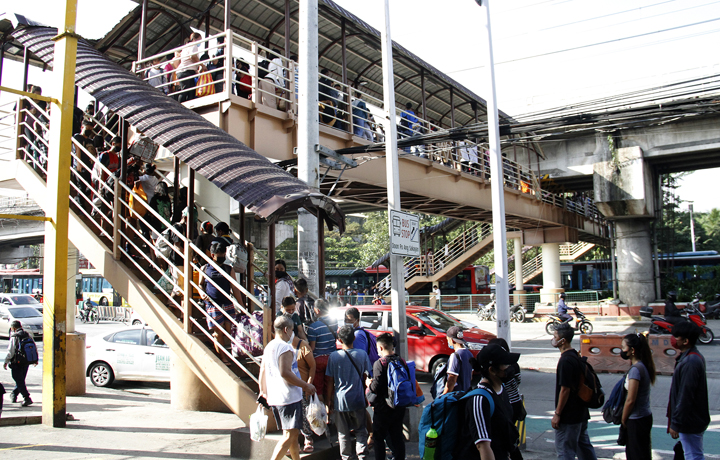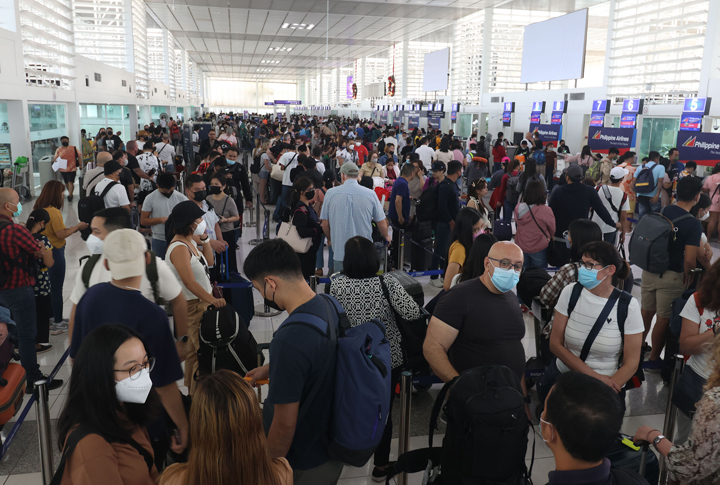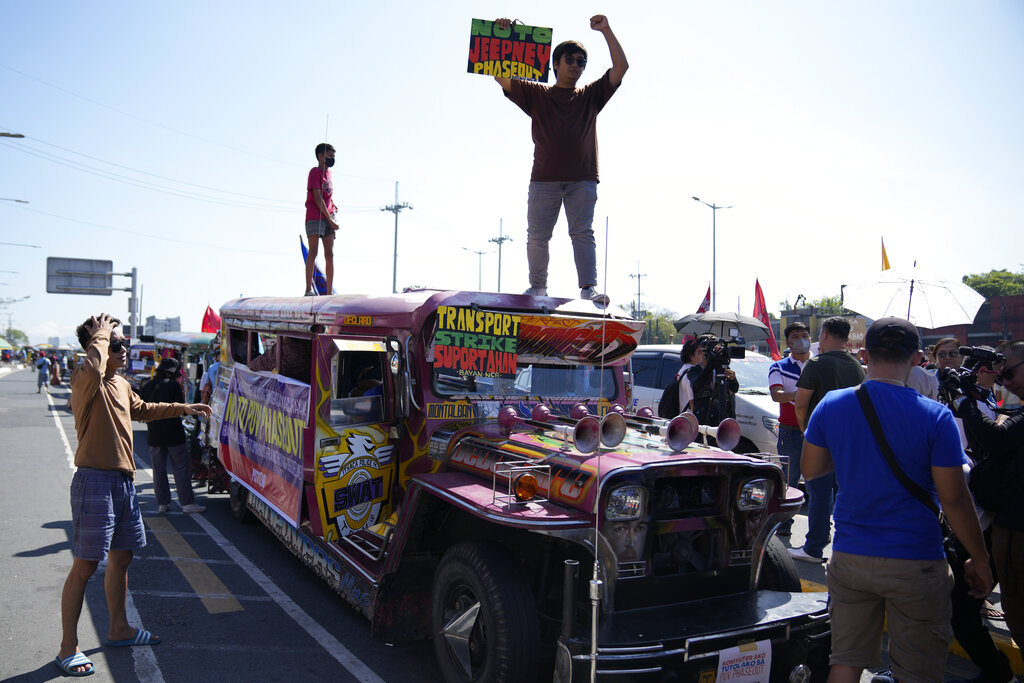TRANSPORTATION Secretary Jaime Bautista understands that the industry’s current standards are simply unacceptable. And with decades worth of delays, neglect and poor planning, he has a lot of firming up to do.
It has been a year since Bautista took office, coming out of the comforts of retirement to help the new government in addressing the transport woes of ordinary Filipinos.
He has been hands-on in tackling the issues in the sector, even going out to experience the daily struggles of an ordinary commuter.
“At the beginning of the new administration, I said the status quo in the transportation sector is unacceptable. We do not accept the traffic, the long queues, the flight delays. We have to change the status quo. That became our mission,” said the Department of Transportation (DOTr) chief.
During his first year, Bautista had to face transport strikes, power outages at the airports, issues on payments on service contracts, rail breakdowns, and even threats to the jobs of maritime workers abroad.

‘Sector with most activity’
The first year of the new administration was all about enabling each sector to grow by providing the necessary infrastructure to end users, as well as implementing policies to streamline processes.
During this period, Bautista said the DOTr implemented several projects in the rail, road, maritime and aviation sectors, including breaking ground for several projects as well as beefing up some modes of transportation.
He cited projects such as the North-South Commuter Railway, Metro Manila Subway, Metro Rail Transit (MRT) Line 7, and the Light Rail Transit (LRT) 1 Cavite Extension as examples.
He noted strides made in the implementation of the Bulacan Airport, the start of the rehabilitation of the Ninoy Aquino International Airport (Naia), the privatization of at least 10 regional air hubs, the development of active transport infrastructure, and the strengthening of the maritime industry through international recognition.
These, according to Infrawatch Convener Terry Ridon, made the agency busy with work.
“The transport sector has seen the most activity in the last year, with flagship infrastructure projects being planned as public-private partnerships, such as the Naia rehabilitation and the Edsa Busway,” Ridon said, adding other developments that Bautista already mentioned.

But, they’re not enough
DESPITE these, Ridon believes that the current transport leadership is “weak” when it comes to resolving various controversies besetting the sector.
“The public is expecting a more vibrant and active top-level response to transportation concerns, as the DOTr is one of the government’s most public-facing agencies. It should have taken a more active role in exacting accountability from domestic carriers that have been found to have violated the Air Passenger Bill of Rights and other related airline regulations,” Ridon said.
He also cited “lingering concerns on the fate of traditional jeepneys.”
Move As One Coalition Representative Hyacinth Benadana, a daughter of a long-time jeepney driver, agreed, saying that the public utility vehicle (PUV) sector has yet to see President Ferdinand Marcos Jr.’s promise of providing players a good life.
“Our sector has always been in danger. Marcos campaigned for a good life for the PUV sector. We have yet to receive word on how the government will implement a just transition and there are no strong commitments on the things that the sector could hope for from the administration of Marcos,” she said.
Last March, public utility jeepneys (PUJs) held a strike against the PUV Modernization Program (PUVMP), saying that its provisions were anti-poor and will only favor large corporations.
Bautista promised to sit down with them to discuss how the industry could move forward.
“Marcos’s commitment was to make their lives easier, have a decent livelihood, but until now those promises have yet to be delivered,” Benadana said.
Active transport advocate group AltMobility representative Ira Cruz agreed, saying that even the Local Public Transport Route Plan, more commonly referred to as the Route Rationalization Plan, has yet to be concluded.
The DOTr has set a yearend goal of consolidating PUVs to enable them to gain access to financing through their cooperatives.
Cruz also said that the active transport sector, despite being championed by the transport agency, has yet to see any “significant developments” and is even facing a “threat of regression.”
“Since Bautista took office, we have actually yet to see a holistic plan as to where he wants to bring the DOTr,” Cruz said.

Honeymoon period is done
CRUZ thinks the agency ought to conduct a review and create a masterplan for a true “transportation system,” one that he describes through the journey of a regular commuter.
“What we’re missing is a transportation system, an environment where all the modes of transportation are carefully coordinated with each other. This is not rocket science, all the government needs to do is imagine the journey of the commuter when they step out of their homes,” he said.
For instance, a commuter going to work may take his bike, a tricycle, or a jeepney to reach the nearest train or bus station. He may then walk leisurely to his office through pedestrian-friendly walkways and sidewalks.
However, this is not the case for the Philippines, yet, Cruz said.
“That’s what we’re missing. They’re building all of these things in silos,” he lamented.
Cruz noted that the government has to be reminded that the majority of Filipinos do not own a vehicle.
“We have to balance it out. After years of prioritizing private vehicles, we have years of catching up to do for public transportation so that it will be more responsive to the needs of Filipinos,” he said.
He urged authorities to take action, especially for the short term, as other mass transportation projects like railways take a decade to complete.
“The kid gloves are off. We are way past the honeymoon period of the Marcos administration. The period to say that they inherited a problematic sector is over,” Cruz said.

normalized either Wednesday or Thursday.
Whole of government
Meanwhile, to be fair, it is not only DOTr that should be accountable for the transport projects of the government, according to Cruz.
“The DOTr isn’t the only national government agency that is in charge of the delivery of these things. The reality is that they need to work with other agencies like the Department of the Interior and Local Government, the Department of Public Works and Highways, the Metropolitan Manila Development Authority, and even the local government units. There’s much to be desired in terms of coordinating all of these bodies,” he said.
Cruz added: “Marcos would always say that it should be a whole-of-government approach and yet we’re not seeing a whole-of-government approach in tackling transport issues.”
Benadana agreed, lamenting that some agencies even hinder developments in the sector, citing the MMDA’s policy against bikes.
“We have to capacitate the offices that implement. But if there’s no political will to make things happen, it’s hard to see it to fruition,” she said.
Cruz noted that once government offices stopped working in silos, then the administration can “create solutions that make sense.”
These solutions, Benadana noted, should be measured by how much they have benefited ordinary commuters.
“There has to be a direct effect on the lives of commuters—better commutes. There has to be performance metrics in measuring the improvement in the lives of commuters,” she said.

Priority areas
BAUTISTA acknowledged that there is much to be done to help provide Filipinos a better transport industry, especially since funding is a main issue for the government.
“The transport infrastructure projects require huge funding. We sought financing through public-private partnerships, private investors, international financial institutions and foreign governments. We also want to modernize existing and future projects. For this, we collaborated with other agencies such as the Department of Information and Communications Technology and the Department of Science and Technology, among many others,” he said.
Bautista noted that the DOTr will continue to put premium on the privatization of the Naia, the partial opening of the LRT 1 Cavite Extension, and the full construction of the subway and the NSCR this year.
Priority shall also be given to the construction of at least 500 kilometers of bike lanes in urban centers and the continued implementation of the PUVMP.
Image credits: Goinyk Volodymyr | Dreamstime.com, Nonie Reyes, Nonoy Lacza, AP/Aaron Favila
